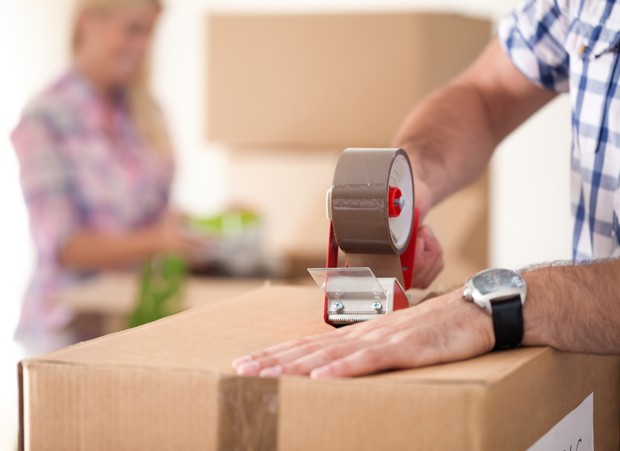
You might think you’ve purged your apartment of unnecessary crap: balled-up receipts from 2013, gratuitous bottles of half-empty ketchup, orphaned nails and screws clanging around in the bottom of a drawer. More likely, though, you’ve just done a passable job of squirreling away all the detritus. It will rear its fearsome head—like an angry, mangy phoenix—as soon as you start packing. What? What is this still doing here?
Moving is never fun, exactly. You might be relieved to get out of a basement apartment, or excited to finally have a balcony, but that’s the destination, not the journey. The journey—dragging recalcitrant, overstuffed boxes down and up many flights of stairs—is a trek through a hot, hellish landscape where tangled cords snarl at your ankles.
It’s going to be brutal. But CityLab asked some experts how to prevent it from becoming the worst day of your life. Here’s what they told us:
Before you start
2) Change your address. Doing this a week or two in advance will help ensure that you get important items, such as bills, and don’t have a lag in services that are tied to a mailing address associated with a credit card (like Netflix or Seamless).
3) Set up utilities. You don’t have to wait until you’re settled in to make arrangements for the wi-fi or gas. Once you know your move-in date, call ahead to schedule whatever you need.
4) Make a plan for your pets. The chaos of moving is stressful for animals, too. To help keep them calm—and prevent them from having an accident or slipping out the propped-open door—consider making arrangements to leave your pet with a friend or at a boarding service.
5) Schedule touch-up painting. Check your lease: Some renters are responsible for a new paint job to get the security deposit back. If that’s your situation, reach out to a painter in advance. “Once you have a moving date set, get a painting bid and plan for the painter to be the last person in before you turn the keys over,” says Brendon DeSimone, author of Next Generation Real Estate. “Waiting until the last minute could be a logistical nightmare.”
6) Ask for help. If you’re not hiring a moving company, enlist friends or family, whom you’ll have to repay with money or lots and lots of snacks.
Packing
7) Designate a “first night” box. You can plan on being pretty exhausted and miserable once you get to the other side. Plan for it by putting your toothbrush, medications, deodorant, and a change of clothes in a separate box so you don’t have to dig for the essentials.8) Start with the stuff you use least often. The first to go? Whatever you’re not getting a lot of mileage out of at the moment, whether that’s winter sports gear or a waffle maker. (Stuff you truly never use should be ditched before you begin.)
9) Use suitcases wisely. If you have to transport them anyway, you might as well fill them with stuff. Stash lightweight, non-breakable items—such as clothes or bedding—in large luggage.
10) Separate cleaning supplies. You won’t want to unload your stuff into weirdly sticky cabinets, notes Debra Johnson, a home cleaning expert from Merry Maids. Instead of tossing cleaners in with the rest of the bathroom supplies, put them in a separate box so that you can wipe off any crud on the counters or shelves before you unpack.
11) Don’t stow your important documents. You don’t want to shove your birth certificate or passport in with other papers, where it might be tough to find them. Tuck them into a folder and carry them with you.

Unpacking
12) Put up a schematic for furniture. Tape up photos or signs indicating where your couch, coffee table, and other big-ticket items should go. This will help movers figure out where you want things positioned, says Chicago-based professional organizer Meg Ricard.13) Save your receipts. “In many cases, moving expenses are deductible from federal income taxes,” notes Rachmany of Dumbo Moving + Storage. “If you’re moving because of a change in employment, you may be able to claim this deduction even if you do not itemize.” To maximize your deductions, keep track of all of the costs you incur during the process and consult an accountant.
No comments:
Post a Comment